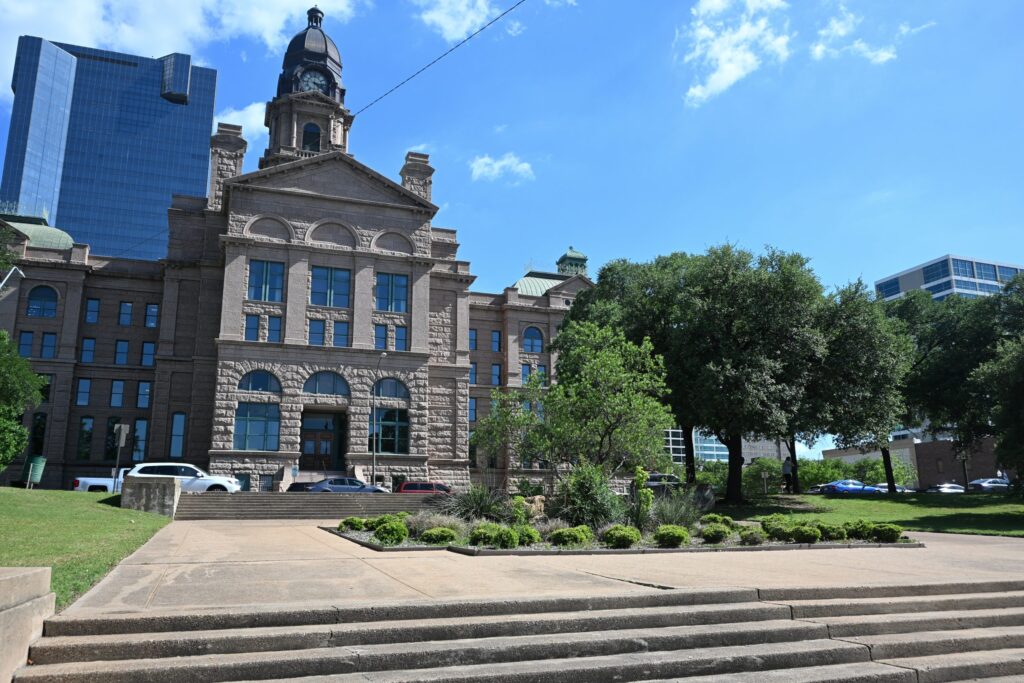Dancing Heart Iglesias has always expressed frustration with the lack of Native American monuments and education in Fort Worth.
Iglesias, a member of the Lakota tribe and owner of Flipstone Vintage & Thrift on White Settlement Road, believes Fort Worth could do more to acknowledge the Indigenous people who inhabited the land within city limits.
Before Fort Worth’s establishment, the area was home to several tribes, including the Caddo, Comanche and Wichita. Iglesias’ store is located on White Settlement Road, which by name and as an earlier byway has direct connections to Fort Worth’s history of pushing Native Americans out of the region.
“Most people don’t know we exist and it’s like, we’re right here in Fort Worth,” Iglesias said.
The city is now in the early stages of honoring its Native American history with a new public art installation at the Paddock Park revitalization project in downtown Fort Worth.
Fort Worth Public Art is seeking professional curators with a background in Native American art and storytelling for Paddock Park. The location’s proximity to the Trinity River and the Tarrant County Courthouse makes it the right place for a permanent public artwork that addresses Native American heritage, according to public art project manager Alida Labbe.
Curators will be selected based on their experience, preferably in large-scale artworks. Applications must be submitted by May 28.
Interested in serving as a curator for the Paddock Park public art project?
Applicants are required to submit the following documents to Alida Labbe, public art project manager, at [email protected].
Letter of interest, 500 words or less, that provides overview of philosophical approach to exhibitions and experience with public art and Native American artists/communities.
Current resume
Three professional references
Up to 10 images of past projects that include title, exhibition statements, project budget, location and commissioning agency
Fort Worth Public Art is a city program created to integrate diverse artwork into the development of the city’s infrastructure improvements in addition to promoting tourism and economic prosperity. The program is managed by Arts Fort Worth with oversight by the Fort Worth Art Commission.
The Paddock Park project is part of larger revitalization efforts led by Downtown Fort Worth Inc. to redevelop the areas surrounding the Trinity River, including Heritage Park. The city closed Heritage Park in 2007 because of safety concerns.
Paddock Park will be redesigned with a waterfall, shallow pool, shaded decks and lighting. Heritage Park will be redesigned with several pedestrian-friendly landscaped spaces and a winding trail. All of the spaces will be designed to accommodate public programming and improve street crossings between parks.
The fundraising campaign to redevelop the Heritage and Paddock parks and connect them to the river below has reached more than $40 million of its $50 million-plus goal so far. BNSF Railway Foundation recently pledged $1 million to the projects.

Ideas to incorporate Native American art into the park renovations spawned from the 2023 “Heritage Park & Paddock Park Public Art Master Plan” developed by researchers at design studio Legge Lewis Legge.
The connection between Paddock Park and Native Americans may not be obvious, but the original fort situated just off the bluffs came about from interactions between Native Americans and European settlers, Labbe explained.
Once applications close, Fort Worth Public Art staff will recommend curators to the Fort Worth Art Commission. Commissioners will then vote to approve members of the curatorial panel June 23. Members of the curatorial panel will be provided a stipend of $1,000 each.
“We understand that although our public art staff is very experienced in working in all kinds of mediums, we want to lean on curators that are more plugged into those artists to better equip the city in creating the best artworks possible,” Labbe said.
Curators chosen for the project will work closely with Labbe and the park’s core team to discuss the goals of the public art project. The curators will meet to collectively identify three to five artists with suitable experience to create artwork incorporating a nod to the area’s Native American heritage.
The public art project is expected to be completed between 2027 and 2028 to coincide with the renovations of Paddock and Heritage parks.
Andy Taft, president of Downtown Fort Worth Inc., emphasized the importance of the public art installation as a way to highlight the emotional and creative impact of Native American heritage in the city.
“Public art has a way to touch emotions and the heart. We’re going to tell the stories of Fort Worth in this broader development. Naturally, the Native American element is very important,” he said.
For Iglesias, the public art project is a massive win for tribes in Tarrant County. She has no personal input for the public art installation, but believes the involvement of Native Americans in the decision-making process is the best first step.
“What they’re doing now in trying to find Native Americans to have a voice in the decision is the most that I would want to see,” she said. “I hope it really encapsulates and respects the heritage.”
David Moreno is the arts and culture reporter for the Fort Worth Report. Contact him at [email protected] or @davidmreports.
At the Fort Worth Report, news decisions are made independently of our board members and financial supporters. Read more about our editorial independence policy here.
Related
Fort Worth Report is certified by the Journalism Trust Initiative for adhering to standards for ethical journalism.
Republish This Story
![]()


